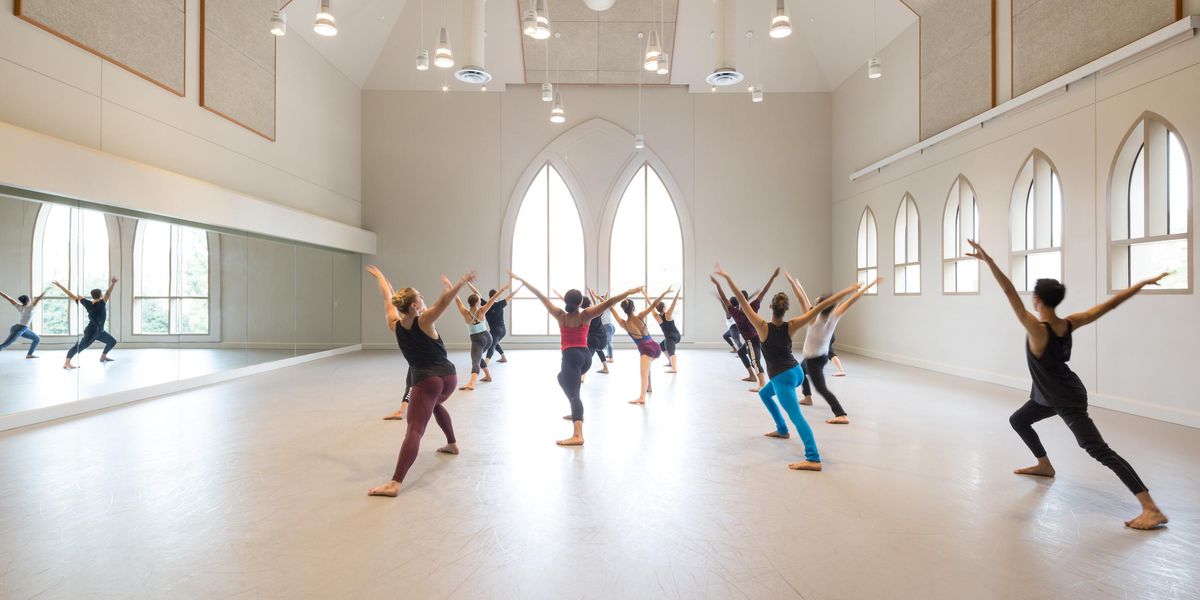Shuffling Back to Broadway
The tap musical that helped break down racial barriers in theater returns—with a twist.
Audra McDonald and the cast of Shuffle Along in rehearsal. Photo by Devin Alberda, Courtesy Shuffle Along.
If you call it a revival, you’d be half wrong. If you call it a new musical, you’d still be half wrong.
Shuffle Along, or, The Making of the Musical Sensation of 1921 and All That Followed is something of a mongrel, both a new staging of the famous Jazz Age show and an account of how lyricist Noble Sissle and composer Eubie Blake created it. The new material is written by Tony-winner George C. Wolfe, who conceived the whole project and brought Tony-winner Savion Glover on board to choreograph.
The stellar cast brings even more Tonys to the table: Audra McDonald,
Brian Stokes Mitchell and Billy Porter, just for starters. When “CBS Sunday Morning” looked in on an early rehearsal, a buoyant young ensemble was busy trying to absorb Glover’s distinctive tap style. “I haven’t tap-danced in decades,” McDonald told the camera. “They do it different now,” she said with a smile. Porter concurred, comparing it to learning a foreign language. Mitchell noted that he would have to blow the rust and the dust off his tap shoes.
Glover has joined forces with Wolfe several times, most notably for the 1996 Tony-winning
Bring in ’Da Noise, Bring in ’Da Funk. (And they have both worked before with Mitchell.) When Shuffle Along opens this month at the historic Music Box Theatre, it will become part of the celebrated history of the game-changing 1921 musical, even as it retells that history.
For those not up on their musical theater lore, Shuffle Along was a critical stop along the path to the Broadway musical we know today, beholden to black music and dance and culture and unthinkable without the musical contributions of African Americans like Sissle and Blake or without the pizzazz of legendary African-American performers like Josephine Baker and Lena Horne. They are hailed now, but when Sissle and Blake created the original show, they were pioneers, daring to bring a black cast to Broadway in a musical they had written and produced themselves with their pals, the comedy team Flournoy Miller and Aubrey Lyles. The black performances familiar to white theatergoers of the time were stereotypes concocted for minstrel shows or vaudeville bits. But the Broadway musical remained the province of showy revues and stodgy, European-style operettas, as theater historian Robert Kimball and composer William Bolcom recount in their wonderful book Reminiscing with Sissle and Blake.
Packed with archival photos and reproductions of promotional pieces—“Musical Knock-Out,” blares one—the book traces how this daring gamble paid off for Sissle and Blake, and the rest of us, too. It credits them with being “among the few writers who refused to go along with the crushing stereotype imposed on them by the white man.”
Shuffle Along, a comic take on crooked politicians in the American South, was a winner at the box office, and it awed critics and audiences alike, running for more than a year in New York and generating successful touring companies in Boston, Chicago and London.
Reviews and news reports documented in
Reminiscing allude to the unprecedented energy and freshness of the show’s “jazz dancing.” There’s no filmed record of the Shuffle Along choreography, but in 1921, “jazz dancing” could cover everything from tap to the fox-trot and the Castle Walk (the Charleston hadn’t yet arrived). An effusive critic for the long-gone New York American tried to describe the dancers: “How they jigged and pranced and cavorted and wriggled and laughed,” he wrote. He doesn’t give a very clear picture of what he saw, but it’s not that hard to imagine what he was used to seeing in the other musicals of the time, which another critic called “languid.” Burns Mantle, who went on to chronicle New York theater in his annual Best Plays yearbooks, wrote in the New York Daily News that Shuffle Along was most notable for its novelty. “The song numbers are full of melody, and everybody dances,” he added.
The word “pep” shows up repeatedly in news coverage of the show, which brought a new, modern spirit to Broadway along with dozens of African-American performers who had been barred from what was accurately called “The Great White Way.” (Though the reference was not to race but to the street’s bright lights.) Segregation had long been a fact of life on Broadway—black ticket-holders saw shows from the balcony, while white ones sat in the orchestra. The enormous success of
Shuffle Along crossed racial barriers and opened the door to African-American entertainers and audiences.
Kimball says that the impact of
Shuffle Along cannot be overstated. The Gershwins were fans, and “Irving Berlin saw it five times,” he notes. There’s a certain irony in the fact that the show, applauded for its originality in its day, is now joining a long line of musicals celebrating the music of African Americans, from Jelly Roll Morton (Jelly’s Last Jam and Dr. Jazz) to Duke Ellington (Sophisticated Ladies) to Thomas “Fats” Waller (Ain’t Misbehavin’) to Eubie Blake himself (Eubie!). Other shows, like Black and Blue and Bubbling Brown Sugar, have anthologized and honored songs from multiple sources.
Wolfe has mined black history from the start of his career, with the 1986 satirical play,
The Colored Museum. Bring in ’Da Noise, Bring in ’Da Funk used Glover’s explosive tapping to examine the history of blacks in America. Both shows debunked corrosive ethnic stereotypes by focusing on them. With Shuffle Along, Glover and Wolfe are seeing to it that it’s always Black History Month on Broadway—as it should be.




